Last Updated on March 29, 2023 by Lisa Vargas
Self-sufficiency is a goal of every prepper and growing enough food and having enough water on hand is an important skill to learn. But what about medicine? What would the world be like without doctors or hospitals? This question has always had me thinking about the different cultures that swear by natural, home-grown remedies for helping with various ailments.
With that said, today we are going explore how you can grow your own medicinal herb garden in your backyard so that if there is ever a grid down situation and there are no doctors or hospitals available, that you can have a little bit of help with particular herbs. In this post, we will explore the fascinating world of herb gardening and how you can create your own medicine cabinet by growing, harvesting, and using medicinal herbs.
By the end of this post, you will have a deeper understanding of the power of medicinal herbs and be inspired to start your own herb garden to create a natural medicine cabinet for you and your family.
Historical Uses of Medicinal Herbs in Various Cultures
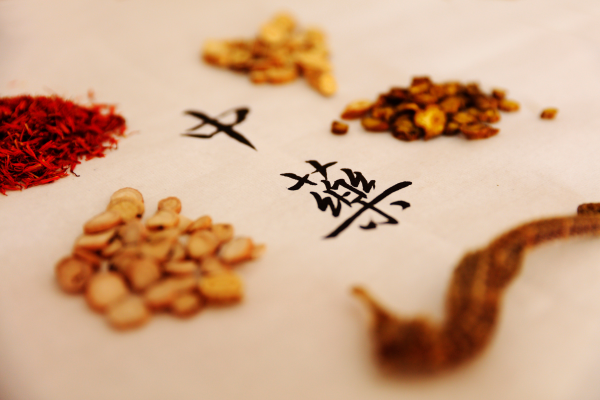
The use of medicinal herbs can be traced back to ancient civilizations across the globe. Each culture has its unique approach to herbal medicine, many of which have stood the test of time and continue to be used today. Let’s look at some of the historical uses of medicinal herbs in various cultures and how they have shaped modern herbal practices.
Traditional Chinese Medicine (TCM)
Traditional Chinese Medicine has a rich history dating back over 2,000 years. TCM practitioners use a variety of natural remedies, including medicinal herbs, to promote balance and harmony within the body. Herbs such as ginseng, astragalus, and licorice root are commonly used in TCM to address a wide range of health issues.
Ayurved
Originating in India over 3,000 years ago, Ayurveda is a holistic system of medicine that encompasses the use of herbs to balance the body’s energies, or doshas. Ashwagandha, turmeric, and holy basil (tulsi) are among the many herbs used in Ayurveda to support overall health and well-being.
Ancient Egyptian Medicine
The ancient Egyptians were well-versed in the use of medicinal herbs and documented their knowledge in the Ebers Papyrus, one of the oldest known medical texts. Garlic, aloe vera, and chamomile are just a few examples of the herbs they used for their therapeutic properties.
Native American Medicine
Indigenous peoples of North America have long relied on the healing power of plants, using herbs such as echinacea, goldenseal, and white willow bark for various ailments. These plants continue to play a vital role in modern herbal medicine.
European Herbalism
In medieval Europe, monasteries were the main centers for herbal medicine, with monks cultivating medicinal herb gardens and creating herbal remedies. Popular European herbs include lavender, peppermint, and St. John’s wort, which remain widely used today.
Understanding the historical use of medicinal herbs in different cultures provides valuable insights into their effectiveness and versatility. Many of these ancient practices have been passed down through generations and have laid the foundation for modern herbal medicine.
The Science Behind the Healing Properties of Popular Herbs
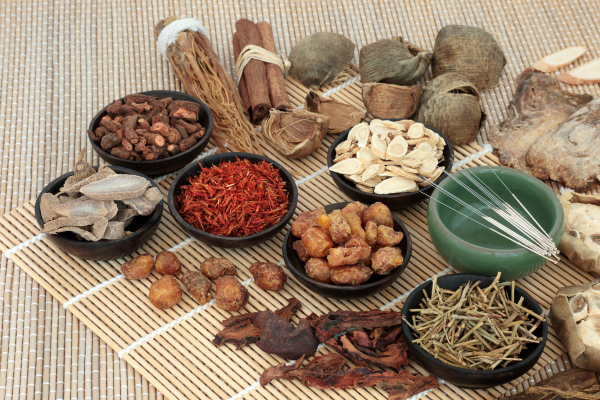
Modern scientific research has helped to validate the traditional use of medicinal herbs, shedding light on the compounds responsible for their healing properties. Here, we will explore the science behind some popular medicinal herbs and their potential benefits.
Echinacea
Echinacea is widely used to support the immune system, particularly in the prevention and treatment of colds and flu. Research has found that echinacea contains compounds called alkylamides, which have immunomodulatory effects, helping to activate the body’s immune response.
Turmeric
Curcumin, the active compound in turmeric, has gained much attention for its potent anti-inflammatory and antioxidant properties. Studies have shown that curcumin can help to reduce inflammation by inhibiting the production of pro-inflammatory cytokines, providing potential benefits for conditions such as arthritis and inflammatory bowel disease.
Ginkgo Biloba
Ginkgo biloba has a long history of use in Traditional Chinese Medicine for its cognitive-enhancing effects. Modern research has revealed that ginkgo contains flavonoids and terpenoids, which have antioxidant and anti-inflammatory properties. These compounds are thought to support cognitive function by improving blood flow to the brain and protecting neurons from damage.
St. John's Wort
St. John’s wort is a popular herbal remedy for mild to moderate depression. The active compounds hyperforin and hypericin are believed to be responsible for its antidepressant effects, working by inhibiting the reuptake of serotonin, dopamine, and norepinephrine, which are neurotransmitters involved in mood regulation.
Valerian Root
Valerian root has been used for centuries as a natural remedy for insomnia and anxiety. Studies have found that valerian contains a number of active compounds, including valerenic acid, which are thought to interact with the brain’s GABA receptors, promoting relaxation and sleep.
As scientific research continues to uncover the mechanisms behind the healing properties of medicinal herbs, our understanding of their potential benefits and applications will continue to grow. It is important, however, to consult with a healthcare professional before incorporating any new herbs into your health regimen, as they may interact with medications or have potential side effects.
Choosing the Right Herbs for Your Needs and Climate
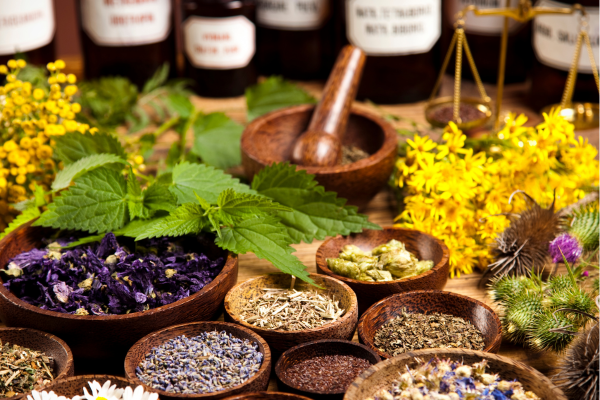
Creating a medicinal herb garden is a rewarding and practical way to cultivate your own natural remedies. However, selecting the right herbs for your needs and climate, as well as providing them with the appropriate care, is essential for success. In this article, we will explore the key aspects of establishing a thriving herb garden, from soil preparation and planting to pest management and maintenance.
Research the Herbs You Want to Grow and Their Preferred Growing Conditions
Before you start planting, it’s essential to research the herbs you want to grow and their specific growing requirements. Consider factors like:
- Hardiness: Choose herbs that can thrive in your region’s climate
- Sunlight: Determine the ideal amount of sunlight for each herb, as some may require full sun, while others may prefer partial shade
- Soil: Learn about the soil type and pH preferred by each herb for optimal growth
Consider Your Local Climate and the Space You Have Available for Planting
Take into account your local climate and the space you have available for planting. This will help you make informed decisions about which herbs to grow and how to best care for them.
- Temperature: Some herbs are more cold-hardy or heat-tolerant than others
- Space: Allocate enough room for each herb to grow and expand, considering their mature size and growth habits
Soil Preparation and Planting
I can’t stress enough the importance of soil preparation and planting. This is the foundation for everything you do moving forward.
The Importance of Well-Draining Soil and Proper pH Levels
Well-draining soil and proper pH levels are crucial for the health and productivity of your herb garden:
- Drainage: Ensure your soil drains well to prevent root rot and other issues related to excess moisture
- pH: Test your soil and adjust its pH level, if necessary, to meet the requirements of your chosen herbs
Planting from Seeds or Transplants
Decide whether to start your herb garden from seeds or transplants:
- Seeds: Some herbs, like basil and cilantro, are easy to grow from seeds and can be sown directly in your garden or started indoors
- Transplants: For more challenging herbs or a quicker start, purchase established plants from a reputable nursery
Tips for Successful Germination and Growth
Follow these tips for successful germination and growth:
- Sow seeds at the correct depth: Plant seeds at a depth equal to two or three times their diameter
- Maintain consistent moisture: Keep the soil evenly moist but not waterlogged during germination
- Transplant seedlings carefully: Gently transplant seedlings to avoid damaging their delicate roots
Watering and Fertilizing
Knowing When and How Much to Water Your Herbs
Proper watering is essential for healthy herb growth. Knowing how much or how little can seem like a daunting task and trial and error can kill a plant if you’re not careful. So here are a few guidelines to follow:
- Frequency: Water your herbs when the top inch of soil feels dry, as overwatering can lead to root rot
- Amount: Provide enough water to thoroughly moisten the soil, allowing it to drain freely
The Role of Organic Fertilizers in Promoting Healthy Plant Growth
Organic fertilizers can help promote healthy plant growth:
- Types: Choose organic fertilizers like compost, aged manure, or seaweed extract to provide essential nutrients
- Application: Apply fertilizers according to the package instructions or as needed based on your herbs’ growth and appearance
Pest and Disease Management
Pest management for your herbal garden is important if you want to have anything left to harvest. There are a variety of different pest control options, and I won’t get into that in this post, but below is a quick list of the most common pets and diseases you will encounter when growing your herb garden.
- Pests: Aphids, spider mites, and whiteflies are some common herb pests
- Diseases: Fungal infections like powdery mildew and root rot
Harvesting, Drying, and Storing Medicinal Herbs for Maximum Potency

Growing your own medicinal herbs is a rewarding endeavor, but to fully benefit from their healing properties, you must know how to harvest, dry, and store them properly. In this article, we will discuss the best practices for preserving the potency and effectiveness of your homegrown herbs.
Knowing When to Harvest Your Herbs
The optimal time to harvest your herbs depends on the specific plant and the part you intend to use. Generally, you should harvest herbs:
- Leaves: Just before the plant flowers, when the essential oil content is at its highest
- Flowers: As soon as they open, early in the morning after the dew has evaporated
- Seeds: When they begin to change color but before they disperse
- Roots: In the fall, after the plant’s aerial parts have died back
Monitor your plants closely to determine the best time for harvesting.
Proper Harvesting Techniques
To harvest your medicinal herbs, follow these guidelines:
- Use clean, sharp scissors or pruning shears to minimize damage to the plant
- Harvest in the morning, after the dew has dried but before the heat of the day
- Be gentle to avoid bruising the plant material, which can lead to a loss of essential oils
Drying Medicinal Herbs
Drying is a crucial step in preserving the medicinal properties of your herbs. Choose a method based on the type of herb and your available resources:
Air Drying
- Bundle 5-10 stems together and secure them with a rubber band or twine
- Hang the bundles upside down in a dark, well-ventilated area with low humidity
- Check the herbs periodically and remove them when they are dry and brittle, typically after 1-3 weeks
Oven Drying
- Preheat your oven to the lowest setting (usually around 100-150°F or 40-65°C)
- Spread the herbs on a baking sheet lined with parchment paper
- Place the baking sheet in the oven and prop the door open slightly to allow moisture to escape
- Check the herbs every 30 minutes, and remove them when they are dry and brittle
Using a Dehydrator
- Follow the manufacturer’s instructions for your specific dehydrator model
- Set the temperature between 95-115°F (35-45°C) for most herbs
- Check the herbs periodically, and remove them when they are dry and brittle
Storing Dried Herb
Proper storage is essential for maintaining the potency of your dried herbs:
- Use airtight containers such as glass jars with tight-fitting lids to protect the herbs from air and moisture
- Store the containers in a cool, dark, and dry location away from direct sunlight and heat sources
- Label each container with the herb’s name and the date it was dried
The shelf life of dried herbs varies, but most will retain their potency for at least one year. Replace any herbs that have lost their color, aroma, or flavor.
Using Fresh Herbs in Your Herbal Remedies
While dried herbs are convenient and have a longer shelf life, fresh herbs can offer more potent benefits in certain preparations:
- Use fresh herbs in teas, tinctures, and poultices for immediate use
- Incorporate freshly harvested herbs into homemade salves and creams
By following these guidelines for harvesting, drying, and storing your medicinal herbs, you can ensure that you are getting the maximum benefits from your homegrown plants.
How to Create a Dedicated Herb Garden Space
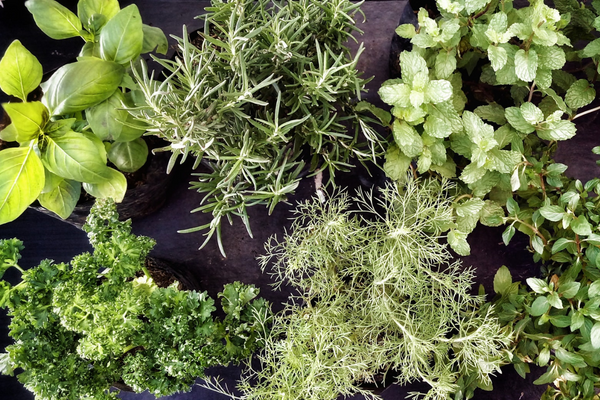
Creating a dedicated herb garden space not only adds beauty to your outdoor area but also provides a convenient and accessible source of medicinal herbs. In this article, we will discuss the steps to design and create a functional and visually appealing herb garden.
Assessing Your Available Space
Before planning your herb garden, evaluate the size and location of the available space. Consider the following factors:
- Sunlight: Most herbs require at least 6 hours of sunlight daily, so choose a spot that receives adequate light
- Drainage: Ensure the area has well-draining soil to prevent waterlogged roots
- Accessibility: Select a location that is easy to access for regular maintenance and harvesting
Planning Your Herb Garden Layout
A well-designed layout maximizes space, accessibility, and visual appeal. Here are some tips for organizing your herb garden:
- Group herbs by growth habits: Plant herbs with similar water and light requirements together
- Utilize companion planting: Some herbs, like basil and oregano, benefit from being planted near each other
- Incorporate height variation: Plant taller herbs, like dill and fennel, in the back and shorter ones, like thyme and oregano, in the front for better visibility
Choosing the Right Containers and Planting Systems
Selecting suitable containers and planting systems is crucial for the success of your herb garden. Consider the following options:
Container Gardening
- Choose containers with drainage holes to prevent root rot
- Select pots made of materials like terracotta, ceramic, or wood that allow air and moisture exchange
- Match the container size to the mature size of the herb to provide adequate space for growth
Raised Beds
- Build or purchase raised beds to improve soil quality and drainage
- Choose a height that provides easy access and reduces the need for bending or kneeling
- Incorporate a built-in trellis or support for climbing herbs, like hops or passionflower
Vertical Gardening
- Use vertical planting systems, like wall-mounted planters or tiered shelves, to save space and add visual interest
- Ensure each herb receives adequate sunlight and water in a vertical arrangement
- Select herbs with shallow root systems, like mint and thyme, for vertical planting
Incorporating Aesthetic and Functional Elements
Enhance the beauty and functionality of your herb garden with creative planting arrangements and functional features:
- Create visual interest: Arrange plants in geometric patterns, or use contrasting colors and textures to create a visually appealing garden
- Add seating: Incorporate a bench or seating area to enjoy the sights and scents of your garden
- Incorporate storage: Include a storage solution, like a garden shed or toolbox, for easy access to gardening tools and supplies
Ensuring Accessibility and Ease of Maintenance
Design your herb garden with accessibility and maintenance in mind:
- Create clear pathways: Ensure there is enough space between plants and beds to comfortably navigate the garden
- Minimize bending and kneeling: Use raised beds, hanging baskets, or elevated containers to reduce physical strain while tending to your herbs
- Plan for irrigation: Install a drip irrigation system or place your garden near a water source for easy watering
Making Herbal Remedies: Teas, Tinctures, Salves, and More
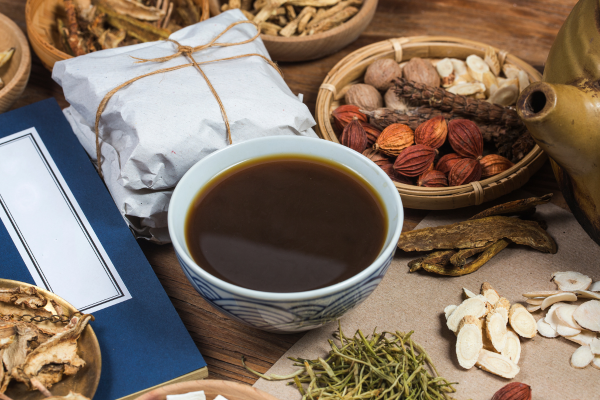
Creating your own herbal remedies can be a rewarding and cost-effective way to support your health and well-being. In this article, we will explore the process of making three popular types of remedies: teas, tinctures, and salves.
Herbal Teas
Herbal teas, or infusions, are simple and versatile remedies that can be used to address a variety of ailments or support overall wellness.
Ingredients and Supplies
- Fresh or dried herbs of your choice
- Boiling water
- Teapot or heatproof container with a lid
- Strainer or tea infuser
Preparation
- Place your herbs in the teapot or container (use approximately 1 tablespoon of dried herbs or 2 tablespoons of fresh herbs per cup of water).
- Pour boiling water over the herbs and cover the container with a lid.
- Allow the herbs to steep for 5-15 minutes, depending on the desired strength and the specific herbs used.
- Strain the tea into a cup, discarding the herbs.
Enjoy your herbal tea hot or cold, and sweeten with honey or other natural sweeteners if desired.
Herbal Tinctures
Tinctures are concentrated herbal extracts made by steeping herbs in alcohol, glycerin, or vinegar. They are a potent and convenient way to consume herbal remedies.
Ingredients and Supplies
- Fresh or dried herbs of your choice
- High-proof alcohol (like vodka or brandy), vegetable glycerin, or apple cider vinegar
- Glass jar with a tight-fitting lid
- Fine mesh strainer or cheesecloth
- Amber glass dropper bottles
Preparation
- Fill the glass jar half to three-quarters full with your chosen herbs.
- Pour your chosen solvent (alcohol, glycerin, or vinegar) over the herbs, completely covering them and leaving at least 1 inch of liquid above the herb layer.
- Seal the jar tightly and shake it well to mix the ingredients.
- Store the jar in a cool, dark place for 4-6 weeks, shaking it daily to help the extraction process.
- After the steeping period, strain the mixture through a fine mesh strainer or cheesecloth into amber glass dropper bottles, discarding the herbs.
Take the tincture as needed, following the recommended dosage for your specific herbs and health concerns.
Herbal Salves
Herbal salves are soothing topical remedies made by infusing herbs in oils and combining them with beeswax to create a semi-solid ointment.
Ingredients and Supplies
- Fresh or dried herbs of your choice
- Carrier oil (such as olive, coconut, or almond oil)
- Beeswax
- Double boiler or heatproof glass bowl and saucepan
- Fine mesh strainer or cheesecloth
- Glass or metal tins for storage
Preparation
- Combine your chosen herbs and carrier oil in a double boiler or heatproof glass bowl set over a saucepan of simmering water (use approximately 1 cup of oil per 1 ounce of dried herbs or 2 ounces of fresh herbs).
- Gently heat the mixture for several hours or until the oil has taken on the color and scent of the herbs.
- Strain the oil through a fine mesh strainer or cheesecloth, discarding the herbs.
- Return the infused oil to the double boiler or glass bowl and add beeswax (use approximately 1 ounce of beeswax per cup of infused oil).
- Heat the mixture gently until the beeswax has melted, stirring to combine.
- Carefully pour the liquid salve into glass or metal
Final Thoughts
Growing a medicinal garden can be a rewarding accomplishment, especially if you are on the path to becoming self-sufficient. As preppers, we are always trying to learn more and more potentially life-saving skills so that in times of emergency or a SHTF scenario, we are prepared. So if you enjoy gardening, pick up a few gardening tools and try out your green thumb like I have. I promise you as time goes on, you will get better and better at the craft and sleep much more peacefully at night knowing you can grow your own food and medicine.
